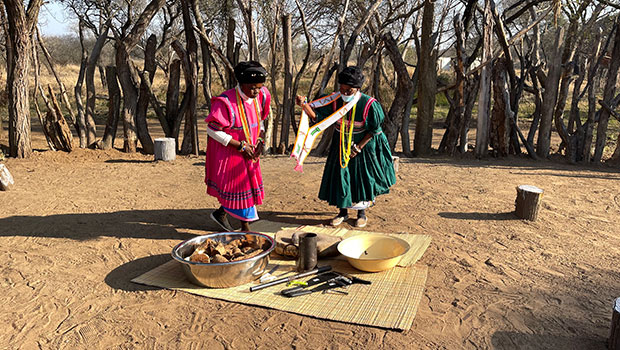Mazda’s Made With Soul campaign invites people who are driven by an innate sense of curiosity to share their stories of precision craftmanship, infused with their soul. As part of the campaign, Mazda delved into the Japanese principles that define the brand, and then searched high and low to find people who are driven by an innate sense of curiosity and who had a yearning to share their passion for their craft.
For Retang Phaahla, the co-founder of Setṧong Tea Crafters, her soul is directly linked to that of the Bapedi culture, to the community that has been a part of her journey to discover harmony through the rituals of tea making and tea drinking. Because harmony is so integral to Setṧong Tea Crafters she felt perfect synergy with the Japanese principles embodied by Mazda’s Made With Soul campaign, particularly that of kacho fugetsu. Kacho fugetso is about respecting and living in harmony with nature. Retang finds harmony with nature by using only traditional herbs in Setṧong’s range of organic and hand-crafted teas.
Speaking on how they’re planted, Retang explains: “The interesting thing about tepane is that it is planted in a way by birds. There’s a certain berry-like seed that the birds like. It’s sticky so they wipe their beaks on different host trees as a way of distributing it. That berry-like seed is sometimes like a parasite because it absorbs all the nutrients from that tree. From there it grows some leaves. Those leaves are what tepane is. In English it is called mistletoe. There are different types of mistletoe – some are poisonous, but we harvest it from trees that are not poisonous. Discerning which tree is poisonous, and which is not, is based on indigenous knowledge that has been passed down from generation to generation.”
Retang reveals that women drank tepane mostly to help alleviate menopausal issues, although they were not aware that what they were treating was menopause. They just knew that tepane helped with the dizzy spells and hot flashes they experienced as they grew older. Young girls drank it for period pain.
Tepane makes a black bush tea, it has a natural vanilla taste, and it is caffeine free.
“When we got the tea analysed, it was found to contain vitamins A, C and D and zinc. It’s a natural multivitamin and it is also good for your immune system. It’s great for your hair, skin and nails as well as overall wellness. It also speaks to the fact that in the rural areas you would find women and even men up to the age of 90 still very productive and going strong. There’s a lot of sustainability in the way they live,” Retang says.
With the diya, they found that the community drinks the leaves of the diya plant. But after assessing it, it was found that the leaves were only available seasonally. The leaves taste like rooibos tea. However, a traditional healer who was part of the women Retang and Nondumiso were empowering revealed that the roots of the diya plant also have a lot of benefits. And that they have been using these roots in traditional healing for a very long time.
In developing and broadening the range of diya and tepane, Retang and her team have infused it with other beneficial herbs and spices for a holistic approach to wellness and for flavouring that invigorates the senses.
“The tepane teas are ones you would start the day with. Because of its nutritional value, it’s a great one to energise you, feed your body and to help you feel balanced. The diya teas with their blood pressure-reducing properties are calming. They are the ones to wind down your day with, from the afternoon to the evening to just relax your body and get your blood circulation going,” she notes.
In commercialising these traditional herbal teas for Setṧong, Retang and Nondumiso had to consult with community chiefs and traditional healers who had to give access to their land, indigenous knowledge and sacred practices. The ancestors were consulted for permission and to gain their confidence that Setṧong would empower the community and honour the heritage and knowledge given.
This respect and humility links itself directly to the Japanese philosophy of kacho fugetsu. It is for this reason that Retang and the inspiring story behind Setṧong Tea Crafters are being honoured as part of the Mazda Made With Soul Campaign, which is amplifying the voices of people who share Mazda’s passion for craftmanship, harmony and soul.
About Made With Soul
By connecting with the driver’s soul, each Mazda is more than just a combination of metal, leather, and glass. Find out more about the #MadeWithSoul series on the Mazda website.

